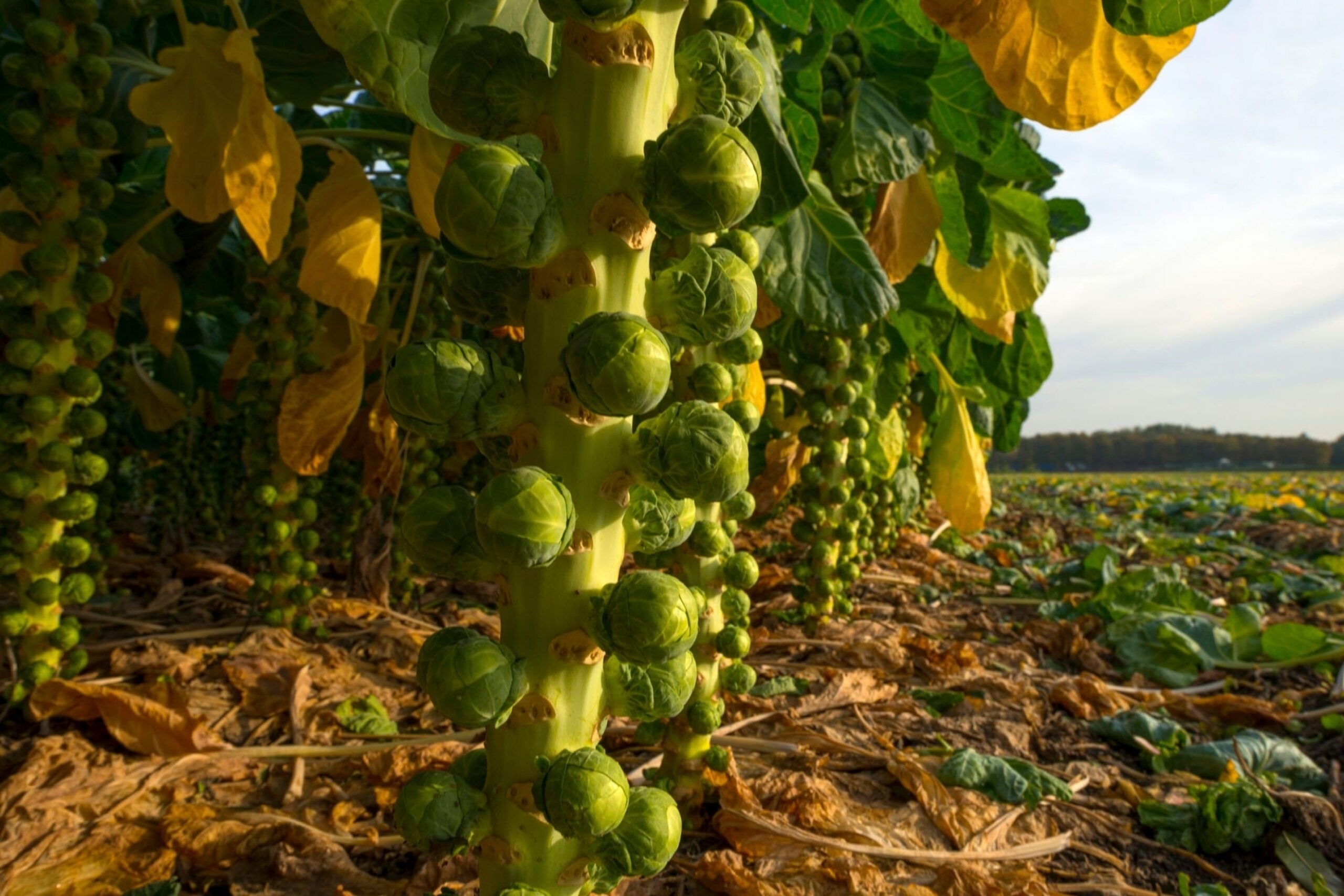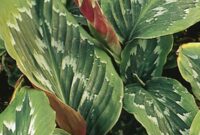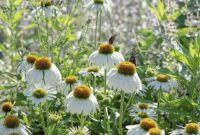Getting Started with Companion Planting for Brussels Sprouts
Brussels sprouts, those miniature cabbage-like vegetables, have found their way into the hearts and gardens of many home growers.
Known for their distinct flavor and versatility in various dishes, these tiny green gems are a delightful addition to any garden.
But what if I told you that there’s a secret to growing even more robust and flavorful Brussels sprouts while maintaining a healthier garden ecosystem? The answer lies in companion planting.
A. Embracing Brussels Sprouts in Your Garden
Before we delve into the world of companion planting, let’s take a moment to appreciate Brussels sprouts themselves.
These vegetables belong to the Brassica oleracea family, which includes other well-known members like broccoli, cauliflower, and kale. Brussels sprouts thrive in cool weather, making them an excellent addition to both spring and fall gardens.
Their distinctive taste, often described as nutty and slightly sweet, makes them a popular choice for gardeners who crave culinary creativity.
B. Unlocking the Benefits of Companion Planting
Companion planting is a gardening practice that involves strategically planting different types of plants together to maximize the benefits of their interactions.
When it comes to Brussels sprouts, companion planting offers a host of advantages:
- Natural Pest Control: Some companion plants can deter common pests that afflict Brussels sprouts, reducing the need for chemical pesticides.
- Improved Soil Health: Certain companion plants can help enrich the soil by fixing nitrogen or breaking up compacted earth, resulting in healthier Brussels sprouts.
- Space Optimization: Companion planting allows you to make the most of your garden space by growing plants that complement each other’s growth habits.
C. Preview of Key Companion Planting Tips
As we journey deeper into the world of companion planting for Brussels sprouts, we’ll cover a range of valuable tips and strategies.
These include selecting the right companions, understanding how to position them in your garden, harnessing their natural pest-repelling properties, and optimizing your Brussels sprouts harvest.
By the end of this blog post, you’ll be armed with the knowledge and inspiration to create a thriving garden where Brussels sprouts flourish alongside their green companions. Let’s get started!
.
II. Companion Plants for Brussels Sprouts
As you embark on your journey to maximize the harvest of Brussels sprouts through companion planting, it’s crucial to choose the right plant allies. T
hese companions can play a vital role in promoting healthy growth, deterring pests, and enhancing the flavor of your Brussels sprouts.
A. List of Suitable Companion Plants
- Marigolds (Tagetes spp.): Marigolds are well-known for their pest-repelling properties. Their strong scent can deter aphids, nematodes, and other common Brussels sprouts pests. Plant them around your Brussels sprouts to create a protective barrier.
- Nasturtiums (Tropaeolum majus): Nasturtiums not only add a pop of color to your garden but also serve as a sacrificial plant, attracting aphids and cabbage white butterflies away from your Brussels sprouts.
- Dill (Anethum graveolens): Dill is a versatile herb that can help deter spider mites, aphids, and cabbage loopers. It also attracts beneficial insects like ladybugs and parasitoid wasps.
- Borage (Borago officinalis): Borage is a favorite among gardeners for its ability to enhance the flavor of nearby vegetables, including Brussels sprouts. Its vibrant blue flowers attract pollinators while repelling pests like hornworms.
- Onions (Allium cepa) and Garlic (Allium sativum): These members of the Allium family are excellent companions for Brussels sprouts. Their strong scent can deter aphids, cabbage worms, and other insects that can harm your crop.
B. Reasons for Selecting These Specific Companions
The choice of companion plants is not arbitrary; it’s based on their unique attributes and how they can benefit Brussels sprouts:
- Pest Deterrence: Many of the companion plants listed above emit scents or chemicals that repel common Brussels sprout pests. This natural pest control reduces the need for chemical interventions.
- Attracting Beneficial Insects: Some companions, like dill and marigolds, attract beneficial insects like ladybugs and parasitoid wasps. These insects can help keep harmful pests in check.
- Soil Improvement: Certain companions, such as legumes like peas and beans, can fix nitrogen in the soil. This nitrogen enrichment benefits the overall health of your Brussels sprouts.
- Flavor Enhancement: Companion planting isn’t just about pest control; it’s also about flavor. Some companions, like borage, can enhance the taste of Brussels sprouts and other nearby vegetables.
By strategically selecting these companion plants and understanding their roles in your garden ecosystem, you’ll be well on your way to reaping the rewards of healthier, tastier Brussels sprouts.
.
III. Planting Brussels Sprouts and Companions Together
Now that you’ve selected your companion plants for Brussels sprouts, it’s time to dig into the nitty-gritty details of how to plant them together for a thriving garden.
A. Layout and Spacing Considerations
- Companion Clusters: Consider grouping your companion plants in clusters or rows around your Brussels sprouts. This concentrated planting can make it more challenging for pests to access your prized vegetables.
- Tall vs. Short: Pay attention to the height of your companion plants. Place taller companions like marigolds or sunflowers on the north or west side of your Brussels sprouts to avoid shading them. Shorter companions can go on the south or east side.
- Spacing: Brussels sprouts typically require more space than most companion plants. Ensure you leave enough room for your sprouts to grow and mature without crowding. Check the specific spacing requirements for each plant variety.
B. Soil Preparation and Nutrient Requirements
- Rich, Well-Draining Soil: Brussels sprouts thrive in well-draining soil rich in organic matter. Amend your soil with compost to improve its structure and fertility. Ensure good drainage to prevent waterlogged roots.
- pH Levels: Aim for a slightly acidic to neutral soil pH range of 6.0 to 7.5, which is suitable for both Brussels sprouts and many companion plants.
- Nutrient-Rich Soil: Brussels sprouts are heavy feeders, so provide them with a balanced fertilizer that contains nitrogen, phosphorus, and potassium. Be mindful of over-fertilization, which can lead to excessive foliage growth and smaller sprouts.
- Companion-Specific Needs: Be aware of any specific soil requirements for your companion plants. For example, legumes like peas and beans can fix nitrogen in the soil, benefiting nearby Brussels sprouts.
- Mulching: Apply a layer of organic mulch around your Brussels sprouts and companions to help retain soil moisture, regulate temperature, and suppress weeds.
By addressing these considerations and preparing your garden bed thoughtfully, you’ll create an environment where Brussels sprouts and their companion plants can thrive together.
.
IV. Pest Control and Disease Management
One of the primary advantages of companion planting in your Brussels sprouts garden is its ability to act as a natural pest control and disease management strategy.
A. The Power of Companion Planting Against Pests and Diseases
Companion planting is like nature’s pest management system. When you strategically pair Brussels sprouts with compatible companion plants, you create a dynamic ecosystem in your garden that can naturally deter pests and minimize the risk of diseases.
Here’s how it works:
- Repelling Pests: Certain companion plants emit scents or chemicals that are unappealing to common Brussels sprout pests like aphids, cabbage worms, and whiteflies. When these pests encounter the scent of a repellent companion, they’re less likely to settle on your Brussels sprouts.
- Attracting Beneficial Insects: Many companion plants attract beneficial insects such as ladybugs, lacewings, and parasitoid wasps. These helpful insects are natural predators of garden pests, effectively keeping their populations in check.
- Disease Suppression: Some companion plants have natural properties that can suppress soil-borne diseases or deter pathogens. This reduces the risk of diseases affecting your Brussels sprouts.
B. Companion Plants with Pest-Repelling Properties
- Marigolds (Tagetes spp.): Marigolds are renowned for their ability to deter nematodes, aphids, and other common pests. Plant them near your Brussels sprouts to create a natural pest barrier.
- Nasturtiums (Tropaeolum majus): Nasturtiums not only attract aphids away from your Brussels sprouts but also serve as a trap crop. They can become infested with aphids, sparing your sprouts.
- Basil (Ocimum basilicum): Basil emits a strong scent that can repel flies and mosquitoes, benefiting your entire garden. Plus, it’s a culinary herb you can enjoy in the kitchen.
- Rosemary (Rosmarinus officinalis): Rosemary’s aromatic foliage can deter cabbage moths and carrot flies. It’s a versatile herb that adds both flavor and protection to your garden.
- Thyme (Thymus vulgaris): Thyme can help deter cabbage worms and is an excellent addition to your companion planting strategy.
- Onions (Allium cepa) and Garlic (Allium sativum): These alliums not only deter pests but also have antifungal properties that can help reduce the risk of soil-borne diseases.
By incorporating these pest-repelling companions into your Brussels sprouts garden, you’re taking proactive steps to minimize the impact of pests and diseases while promoting a healthy and harmonious garden ecosystem.
.
V. Harvesting and Maximizing Yields
Your journey through companion planting for Brussels sprouts has brought you to the moment of truth: the harvest. In this section, we’ll share essential tips on when and how to harvest Brussels sprouts to ensure the best flavor and texture. Additionally, we’ll discuss strategies for maximizing your yields by harnessing the power of companion planting.
A. Harvesting Brussels Sprouts for Flavor and Texture
- Timing is Key: Brussels sprouts taste best when they’ve been exposed to a few light frosts. Harvest your sprouts after the first frost, which sweetens their flavor and reduces bitterness. The cold temperatures convert starches into sugars.
- Harvest from Bottom to Top: Start harvesting from the bottom of the stalk, picking the largest sprouts first. Leave the smaller ones at the top to continue growing. This allows you to enjoy a more extended harvest period.
- Use a Sharp Knife or Pruners: To avoid damaging the plant, use a sharp knife or pruning shears to cut the sprouts from the stalk. Leave a small stub of the stem attached to the sprout.
- Remove Yellowing Leaves: As you harvest, remove any yellowing or damaged leaves from the plant. This helps improve air circulation and reduces the risk of disease.
B. Maximizing Yields Through Companion Planting
- Interplant with Fast-Growing Companions: Companion plants like lettuce, radishes, or spinach can be interplanted between your Brussels sprouts. They’ll mature and be harvested before the sprouts, making the most of your garden space.
- Successive Planting: Consider staggering your Brussels sprouts planting. Plant a batch early in the season and another later on to extend your harvest period and maximize overall yields.
- Crop Rotation: After harvesting your Brussels sprouts, practice crop rotation. Avoid planting them in the same spot for at least two to three years to reduce the risk of soil-borne diseases and pests.
- Companion Plants for Healthier Brussels Sprouts: Remember that healthy Brussels sprouts yield better. By planting pest-repelling companions, you can maintain the overall health of your Brussels sprout plants.
- Companion Planting for Flavor: Some companion plants, like borage or herbs, can enhance the flavor of Brussels sprouts when planted nearby.
By following these harvesting tips and incorporating companion planting strategies, you can enjoy an extended Brussels sprouts harvest with improved flavor and texture.
Your garden will not only be more productive but also a harmonious ecosystem where Brussels sprouts and their companions thrive together.



